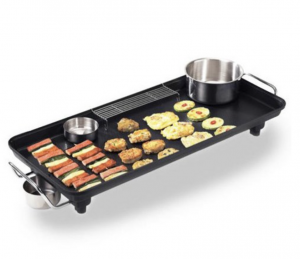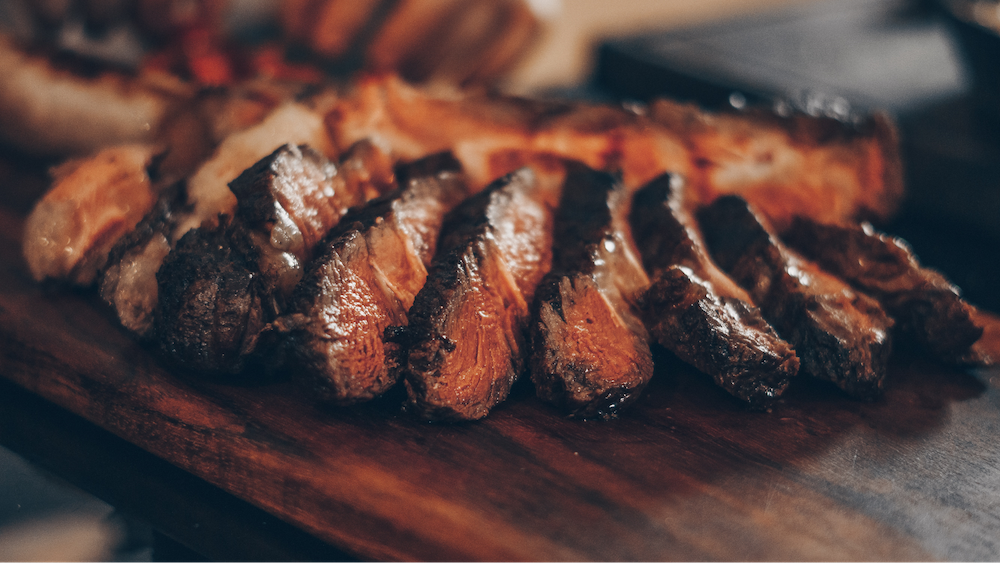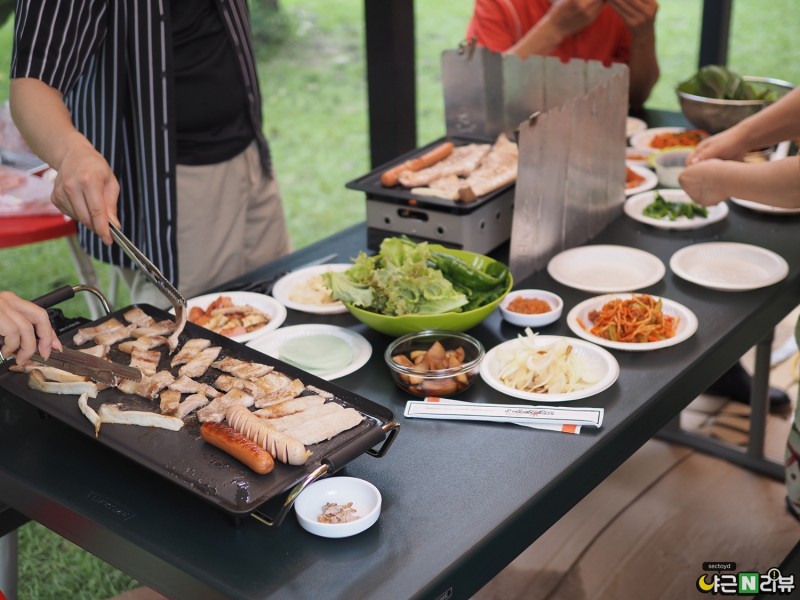If you’re eating outdoors, no food really hits the spot like barbecue. Whether you’re roasting hot dogs on a campfire or flipping burgers on a grill, barbecues are a great way to make memories with friends and family in the outdoors.
Barbecue is something that is universally enjoyed around the world, and some countries even pride themselves on having their own barbecue culture unique to their people. One such country is my homeland, South Korea. Of course, both Korea and the US have their similarities in the world of barbecue, but they also have some glaring differences as well. Let’s take a look.
The Barbecue Equipment
Every barbecue begins with equipment, especially when you’re outdoors. It’s not uncommon for a lot of American households to have their own portable grill to take with them wherever they need. Whether it’s a trip to a campsite or just a tailgating barbecue at a Patriots game, odds are one of those grills will be tucked safely into a corner of your car’s trunk.
Gas, charcoal or wood? A few equipment options:
Coleman Gas Grill – this is one of your typical tailgating grills, definitely too large for a backpacking trip but not too big to load in the back of your car. The stand that supports the grill can be removed, so you can easily set the thing down on any picnic table and grill away.
Weber Jumbo Joe – Another portable grill that’s relatively inexpensive and easy to carry around. It can hold up to eight burgers at once, and can perform multiple barbecuing tasks – smoking, grilling, you name it.
BioLite FirePit+ – This is a grill that doubles as a firepit, and can even charge your phone. You can make a campfire without much work, and throw in some charcoal to transform it into a grill. In other words, you can make dinner and dessert (s’mores, anyone?) on the same device.
Many front country campgrounds and local parks in U.S. Parks also have basic grill set-ups you can use.

In Korea, it’s a slightly different story. Sure, portable grills are still a thing, but the Koreans take ‘portable’ to the next level. The large, dome shaped charcoal grills that almost define American barbecue take the back seat in lieu of smaller ones powered by either fuel or electricity, often rarely bigger than a large board game or two laptops put together. They may not be your best friend on camping trips though, unless you have a place to plug them into (most of them run on electricity).
Here are some examples:
Tefal Silvermania Electric Grill – Equipped with a heat sensor and non-stick coating, this grill is efficient, state of the art, and portable, allowing you to barbecue basically anywhere.
KitchenArt Max Electric Grill – This is a bit bigger than the Tefal Silvermania, but sometimes in barbecue, bigger means better. It can handle a lot more food, and also doesn’t take up too much space while doing so. It also comes with a little rack that lets you store your cooked food.
That said, large charcoal grills do exist in Korea, but here’s the best part – you rarely have to carry them around. Most campsites will set up grills right where you set your tent up. Just reserve your dinner time at a specific hour, and the authorities will come and help you with your grill. Most lodges and campgrounds have people who will set everything up for you, and, if you’re lucky, you’ll also get some side dishes native to the area too! Korea prides itself on its convenience, and barbecues are no exception.

The Food
Now that we’ve set up our grills, it’s time to chow down. Picture a typical American barbecue. What goes on the grill? Most likely some burger patties, and some hot dogs too. Maybe some veggie burgers or vegetable kebabs if you’re a vegetarian or vegan. If you’re in the right place, maybe some fresh shrimp as well. Or, you could go for some delicious steaks, be it a juicy ribeye or a tender fillet. Ribs, perhaps? One thing you’ll notice is that American barbecues tend to revolve around beef, with pork and seafood often taking up supplementary roles.

In Korea, on the other hand, pork takes the center stage. Pork belly, or samgyeopsal, is the staple of any Korean barbecue, especially if you’re outdoors. The reason? It’s relatively cheaper compared to beef, and it’s very fatty and rich. It also goes incredibly well with grilled kimchi, as well as soju, Korea’s go-to alcohol beverage. Basking in a lawn chair next to your tent under the stars, with the aroma of pork belly rising around you, is an image that almost every Korean camper can relate to.

Another notable difference is the lack of sauce in Korea. A lot of American households will have barbecue sauce on their burgers or ketchup and mustard on the side, and some even have their homemade special sauce, a recipe passed down from generation to generation. In Korea, barbecue sauce is more or less nonexistent in barbecues. Instead, you’re more inclined to flavor up your meat by dipping it in salt and pepper, or a soybean-hot pepper paste called ssamjang. The latter is mostly used when you wrap your meat in a leaf vegetable, such as lettuce. Ssam literally means ‘wrap’ in Korea.
At a typical Korean barbecue, you’re likely to start off with some banchan, or side dishes, while you put your meat on your grill and wait for it to cook. Alcohol and soft drinks go back and forth as you consume your now roasted meat, whether in wraps or on its own. After your main course, you’ll finish your meal with some soybean paste stew, or doenjangjjigae (yes, it’s literally a mouthful), or some ice cold noodles in broth, or naengmyun. The former is more likely when you’re on your own, mostly because the latter is a bit more difficult to prepare outdoors.

The Similarities
But as different as these two barbecue cultures are, they do have one thing in common: harmony. Take a typical campsite barbecue, for instance. The food and drinks may be different, but the mood isn’t. You’re outside, leaving the city behind. You’re surrounded by wilderness and the people you love. The orange blaze of the grill illuminates your companions’ faces, literally lit up in smiles. That’s something that we can all relate to, and that’s what makes barbecue special. It’s not just about the food, but about getting together and enjoying each other’s company. Again, both Korea and the US have differing barbecue cultures and nothing will change that. But the main essence of barbecue, the togetherness and the tastiness of the event, is a common theme that is not just shared between these two countries, but around the world as well.
